Approaching the Library of Korean Literature
A cursory dive into this monumental series from 2013–2017
Quick Update: For the benefit of everyone, I’ve put together a Bookshop list with all of the available Library of Korean Literature titles on it, and posted this Google Sheet with the basic details for all 27 Korean titles Dalkey brought out. This is key since some of the articles about the first ten reference forthcoming books that were never published . . .
Let’s start with a bold statement: Dalkey Archive’s “Library of Korean Literature” is the greatest contribution of our times to the promotion of East Asian literature—and one of the most overlooked.
I can’t find the original press release announcing this monumental series (although scouring Wayback Machine, I was reminded of the old Dalkey Archive site from the period when this was announced, which is pictured below and ties into the cover conversation below), but, in short, back in 2011 LTI Korea President Kim Seong-kon signed an agreement with John O’Brien to support Dalkey Archive in publishing 25 translations of Korean literature over a three-year period. My memory may be faulty, but the dollar amount pledged was something between $250,000 and $350,000. A significant investment on the part of the Korean government; a virtual guarantee that Dalkey Archive wouldn’t lose money on any of these books.
Although that original press release may be buried in the Internet graveyard of digital ephemera, The Korea Herald ran a piece in 2013 when the first 10 titles in the series were released that, granted, is terribly dry and factual, and reads like an AI-generated press release, but also heralds (pun intended) the breadth of this project:
The U.S. publisher and LTI Korea agreed in 2011 to publish a series of English-language translations of Korean literary works in the U.S., the first time such a project is taking place outside of Korea.
“This is the first time in American and British publishing that so many titles from a particular country have been published at once,” said publisher John O’Brien, the founder of Dalkey Archive Press, in 2011.
The living authors of the series are scheduled to tour the U.S. and other countries once all 25 volumes hit bookshelves in the U.S., according to LTI Korea.
A few years later, in 2015, Ed Park (who, incidentally, inspired this post), highlighted the series in a much richer article for the New Yorker that opens by looking at the Korean compulsion to apologize (satirized in the novel At Least We Can Apologize, which he discusses and is featured below) and the concept of han (“a mélange of sadness, rage, and despair—a condition born of a sense of oppression and grievance, and impossible to assuage by apologies alone”) before touching on how little access American readers have had to Korean literature over the years:
For American readers, literary evocations of Korea have come, for the most part, in the form of dystopian novels written by people without any direct connection to the country. Adam Johnson’s Pulitzer Prize-winning novel, The Orphan Master’s Son, is set in the harsh confines of North Korea; at the other extreme, David Mitchell’s Cloud Atlas features a futuristic South Korea-inspired “corpocracy,” a hotbed of clones, plastic surgery (“facescaping”), and insurrection. With few exceptions, novels by actual Koreans have not registered here. Kyung-sook Shin’s Please Look After Mom briefly appeared on the Times best-seller list in 2011. (She made headlines this year amid charges that she once plagiarized passages from a Yukio Mishima story, for which—yes—she later apologized.) Kim Young-ha’s I Have the Right to Destroy Myself (2007) and Hwang Sok-yong’s The Old Garden (2009) both received a trickle of reviews, and Yi Mun-yol’s story “An Anonymous Island” appeared in these pages in 2011. That’s about it. Happily, Dalkey Archive’s series, launched in 2013, in collaboration with the Literature Translation Institute of Korea, provides a panoramic view of Korean fiction, in all its strangeness and variety, from the nineteen-thirties to the present.
This sentiment about the lack of access English readers had to Korean literature at the time is echoed in the “exit interview”1 the aforementioned LTI Korea President Kim Seong-kon gave in 2014:
1. In your opinion, what are your greatest accomplishments at LTI Korea?
When I took office, I was surprised at finding that few LTI staff members could speak English and that consequently few books of Korean literature had been published in the U.S. or the U.K. Thus I implemented the English Team to raise the profile of Korean literature overseas more actively. [. . .]
When I was Director of Seoul National University and President of the Korean University Presses, Dalkey Archive Press proposed that we jointly publish a series of Korean literature entitled, “The Library of Korean Literature.” I recommended LTI Korea to Dalkey. They agreed to publish 25 volumes; 10 volumes came out in 2013. Five volumes will be published in October, 2014 to be exhibited at the Frankfurt International Book Fair. The rest 10 volumes will come out in 2015.
In the past, LTI Korea published single volumes sporadically. Since my tenure at LTI Korea, I have emphasized publishing a series of Korean literature which would enable foreign readers to have a bird-eye-view of Korean literature from the colonial period through the postwar industrial age to the postmodern electronic era. That is why I made White Pine Press of New York publish “The Korean Voices Series” and had Argo of Prague publish 10 volumes of Korean literature.
(It’s probably a translation thing, but that “made” in relation to White Pine Press is kind of funny. LTI Korea as translation bully!)
To put some data to this, according to the Translation Database, between 2008 and 2012—the years prior to the launch of Dalkey’s series—15 works of fiction from Korea were published in the U.S. for the first time, and 14 works of poetry. So, around 6 titles a year. From 2013–2019 (when the database gets a bit wonky, and for which I, à la typical Korean fashion, am constantly apologizing), there were 74 works of Korean fiction that came out, and 31 poetry collections—an average of 15 new titles a year.
Coincidentally (?), Psy’s “Gangam Style” went viral in the fall of 2012, and since that point Americans have been borderline obsessed with Korean culture. BTS and BLACKPINK, Parasite and Squid Game and K-Dramas, a 78% increase in enrollment in Korean language classes—and, in the world of literature, even before winning the Nobel Prize, Han Kang was already a superstar thanks to The Vegetarian and Human Acts.
Although Dalkey’s series predates the true boom in interest in Korean culture by a smidge—BTS becomes truly global around 2017—these books never really got their due. That’s something that applies to almost any series of translated titles, I know, but considering that Dalkey’s Korean publications made up more than 36% of the works of Korean fiction published published in that 2013–2019 period, you’d think these would’ve been/would still be a major part of the conversation around Korean literature. And yet, at cursory glance, the only significant coverage I can find for most of these books is Tony’s Reading List, where Tony Malone has reviewed 21 of the 26 (yes, 26 is right) titles in the series.
In fact, mere hours before I starting writing this a Dalkey fan wrote in asking if the series was still active, and if there were any titles published after number 21.
Which is a problem.
A series of this magnitude (and I have no idea why they ended at 26 instead of 25, but there we are) shouldn’t have fallen off the radar so quickly. And although there are myriad reasons for this—perennially understaffed, common difficulty getting publicity for translations, erratic publishing schedules, etc.—I think the biggest one is also the most obvious—the covers.
Initially this was going to be a post about the various eras of Dalkey covers. From the black & white ones from the good ol’ days, through the addition of color, to the Todd Bushman era, then Danielle Dutton/Nicholas Motte era, the diagonal three thumbnails period, etc., ending with the Essentials, which, one could argue, are a more sophisticated and attractive advancement on the Library of Korean Literature: spines that are simply a solid block of color, with geometrically informed fronts.
There are two noteworthy differences between these and the Essentials: 1) the Library of Korean Literature is numbered, which is one reason why I know the 26th is Mannequin by Ch’oe Yun, and 2) the Essential covers at least indicate something about what’s behind the cover. It may be tonal, it may be abstract, but at least it isn’t just a circle. Also, the Korean books look more like the website above, whereas the Essentials are definitely more modern and fit in with common trends—even if no one else is doing covers quite like this.
On a personal level, I’m a sucker for series. As a kid, I was constantly searching for missing issues in my meticulously ordered X-Men comics collection. I would buy boxes of baseball cards and, in my binders, count out the exact number of 9-card pages I would need to complete the Upper Deck/Donruss/Topps set for that year, and put each numbered card in its appropriate slot. (I got very very good at multiplying and dividing by 3s and 9s as a result, so OCD has its benefits?) I collected the first dozen or so NYRB titles in their initial cover design simply because they were numbered on the spines. I still get excited when I see “ND Paperbook 617” and feel that urge to collect and sequence.
The problem with how Dalkey Archive implemented their series strategy for the Korean Library isn’t exactly in the numbering—it’s in the lack of general information about the book itself. What is Stingray? A novel? Short stories? Funny? Historical? Horror? There’s literally nothing to key off of. And although the jacket copy is definitely helpful (“Hailed by critics, Stingray has been described by its author as ‘a critical biography of my loving mother.’”), it’s kind of too little, too late—the average reader isn’t picking this up to find out what it’s about when it’s placed in context of hundreds of more vibrant, eye-catching, information rich covers.
And after all that, we’ve arrived at the point where I had initially planned on starting this post.
Over all 40 (or 41 or 42 depending on how you count) years of Dalkey’s existence, it’s published 27 books translated from Korean. Twenty-six as part of the Library of Korean Literature and Jung Young-moon’s A Contrived World (a book I love) that’s not.
And since John launched this series, I’ve: gone on an editorial trip to Korea, graded innumerable translation samples for the LTI Korea translation academy, evaluated full manuscripts for them, was a judge on multiple iterations of their award for Korean literature translated into English, and published eight works translated from Korean at Open Letter (plus Elisa Shua Dusapin, who is half-Korean), including a Translator Triptych curated by Janet Hong last summer. I’ve taught multiple Korean works as part of my “World Literature & Translation Class” (The Vegetarian, Impossible Fairy Tale, Counterweight)2 and read far more . . . and yet, before deciding to write this, I had almost no grasp on what this Dalkey Archive series was about.
I read a few of these when they came out (at least The Square, Another Man’s City, Pavane for a Dead Princess, maybe others), but there was never a contextucritical (my neologism) document or podcast that keyed me into what various aesthetic lines were included in the series, where to start, which titles would most interest me—not even in Context.
Additionally, my suspicion is that all the books in the series were selected by Dalkey Archive and LTI Korea based on which titles LTI Korea already had translated and sitting around. There’s nothing necessarily wrong with that, it just left me guessing as to which were “Dalkey” titles, and which were titles that filled in various aesthetic gaps and satisfied LTI Korea interests.
Not to mention, I have some quibbles with the various translations. I’m not going to bash anyone in this post—what’s the point?—but many of these books feel like they could’ve used one more pass, either by a detail-oriented editor, or the translators themselves. Which reinforces my belief these were translated for LTI Korea and then picked up by Dalkey Archive.
Regardless, after Ed Park raved to me about At Least We Can Apologize, I decided that I would pull five of these that sounded interesting and just dive in, see what’s here, and, in the back of my mind at least, decide if any of these should become Essentials. There are still around 18 books from the series I haven’t read, and as you’ll see, I gravitated toward the more contemporary selections, but hopefully this’ll pique your interest in what’s behind the mysterious circles.
At Least We Can Apologize by Lee Ki-Ho, translated from the Korean by Christopher J. Dykas
Original Date of Publication: 2009
Dalkey Publication Date: 2013
GoodReads Stats: 3.56 stars on 747 ratings
Description: Ed Park’s summary of this book is way more illuminating than the jacket copy on the book itself (as you’ll see, all of the descriptions of these books are succinct to the point of meaningless), so I’ll step aside and let him take this:
Jin-man and Si-bong are honest liars. They always make sure to commit their offenses after admitting to them, proving so adept at the racket that their caretakers put them in charge of collecting the apologies of the other inmates. This equilibrium is interrupted by the arrival of a new guy, “the man with the sideburns,” who despairs at his confinement and tosses messages over the institution’s fence in an attempt to reach the outside world. Jin-man and Si-bong start to copy him, packing their notes—“We are being held captive. If you find this note, please report this to the police. The man in our room said that you will be generously rewarded”—into sock crates. The messages hit their mark. The institution collapses in scandal, and Jin-man and Si-bong emerge to a media frenzy. Camping out at the dingy apartment of Si-bong’s sister and her pimp boyfriend, they fruitlessly hunt for jobs until they hit on the idea of marketing their sole indisputable skill: apologizing for someone else’s sins.
Personal Reaction: This book is a delight! Sure, the general conceit is kind of goofy and the plot rather absurd, but it’s one of the funniest Korean books I’ve ever read. (Although as with any good Dalkey book, the ending is pretty bleak.) As you can see below, the prose is incredible direct, almost standoffish or flat—subtly emphasizing the fact that Jin-man and Si-bong are, in today’s parlance, neurodiverse characters, yet using that distance and oddness to imbue the text with some great, warm humor.
Excerpt:
Si-yeon [Si-bong’s sister] lived with a man. He was sixteen years older than her, but Si-yeon didn’t speak to him in the formal. She would usually just call to him with a “Hey, you!” or “Hey, son of a bitch!” or “Crazy fuck!” The man usually called her “honey.” He called us both “brother-in-law.” We didn’t really know what to call him, so we didn’t call him anything. But we never really had any problems. That was on account of there no really being any reason for us to call on him first.
Themes: Given the way minds work, if you take any group of objects and put them together, you’ll immediately notice some similarities (and differences). So it’s no surprise I found a lot of thematic overlap among the five books I picked off the shelf. And At Least We Can Apologize is a great place to start identifying these. First off, although this book features two friends who spend basically all their time together, it’s a very lonely book—especially at the end. Although there is an overarching plot that mostly takes shape in act III (so to speak and more on this below), for the most part this is a drifting, picaresque book. I’m not sure if this is an aspect of Korean literature overall, or a trend at a particular moment in time, or a coincidence, but a lot of these books have a sort of aimlessness to them, leaning more on atmosphere and situation than an intricate, well-orchestrated plot. Both of these things—loneliness and favoring character over plot—are pretty common Dalkey Archive tropes.
Other Praise: Michael Orthofer in the Complete Review:
Simpleminded narrators, like alcoholics, can be frustrating, but Lee handles his quite well. The way Jin-man and Si-bong are victimized is provocative, and can be tough to take, but it is also part of a rounded picture of the characters, and a foundation for the somewhat unexpected turns the story takes. The grim humor is far more grim than funny, but also quite well handled by Lee.
At Least We Can Apologize is—I'll say it again—an uncomfortable read, but it is quite accomplished. Worthwhile.
Other Books by Lee Ki-Ho in English Translation: So Far, and Yet So Near; Kwon Sun-chan and Nice People
No One Writes Back by Jang Eun-Jin, translated from the Korean by Jung Yewon
Original Date of Publication: 2009
Dalkey Publication Date: 2013
GoodReads Stats: 4.19 stars on 5,063 ratings
Description:
Communication—or the lack thereof—is the subject of this sly update of the picaresque novel.
No One Writes Back is the story of a young man who leaves home with only his blind dog, an MP3 player, and a book, traveling aimlessly for three years, from motel to motel, meeting people on the road. Rather than learn the names of his fellow travelers—or even invent nicknames for them—he assigns them numbers. There's 239, who once dreamed of being a poet, but who now only reads her poems to a friend in a coma; there's 109, who rides trains endlessly because of a broken heart; and 32, who's already decided to commit suicide. The narrator writes letters to these men and women in the hope that he can console them in their various miseries, as well as keep a record of his own experiences: "A letter is like a journal entry for me, except that it gets sent to other people." No one writes back, of course, but that doesn't mean that there isn't some hope that one of them will, someday . . .
Personal Reaction: Pleasantly surprised! In writing an earlier post, I found out that No One Writes Back isn’t just the best-selling title from the Library of Korean Literature—it’s sold twice as many copies as the book in second place. It’s far and away the most popular of all of these books, and may well be the most successful—sales-wise—of all the “hotel” books Dalkey has done.3
For a picaresque novel, the plot of this novel is pretty damn tight, and follows a structure I’ve been noticing more and more, in which the true context of the book’s present moment isn’t revealed until the final act. In this case, we don’t really know why this dude is wandering from hotel to hotel for years—nor do we know how he could afford to do so—until a critical scene is sprung on us in the last few pages. It’s less like Freytag’s Triangle with the plot building to a climax and resolution, and more like a flat line going nowhere until a sudden info dump re-contextualizes all that came before.
Excerpt:
“There’s nothing wrong with what I said. After all, novelists are vendors who have to sell their novels. They have to write good novels and raise their brand value to make them sell. The only difference is that they disguise their products as art.”
“You know that’s not what I mean. I mean, why are you personally selling your own novels? Bookstores will do that for you.”
It seems that selling your own novels would be as difficult as selling your own body. If I said that, she’d probably say, how is it any different from selling the bread you baked, or the gimbap you made? But no one wonders, as they buy it, who made that gimbap. Gimbap is something you’re supposed to make and sell yourself. But novels are different. People think novels should be sold by someone else in order for them to maintain their dignity. The more commercial art becomes, the more it is accused of being vulgar. Who, indeed, would write novels if they had to sell their own?
Themes: Sooooo fucking lonely. Writing letters every day to various people you think you’ve made a connection with only to have every single letter go unanswered? Major bummer. Especially since this habit starts after his girlfriend abruptly leaves him for her ex on the day of his grandfather’s funeral. And sure, the rapport he has with 751— aka the author he meets on the train—is charming and very rom-comish, but (no spoilers) are things really going to work out for the two of them?
Other Praise: From Nicholas Lezard’s review in The Guardian:
Jang Eun-Jin has a very good way of releasing devastating snippets of information at strategic points; by the time you get to the end of the novel, you might find yourself wondering if Jihun's behaviour is actually odd enough. The book also has that pleasingly spooky sense of folding in on itself: the female novelist he meets on the subway may very well be the writer of this book. No One Writes Back has the trappings of the avant garde – the carefully affectless style, the way it is told in numbered paragraphs – but in terms of the emotional impact it delivers, it is, in its way, as sentimental as The Old Curiosity Shop. All I can say, in a rather dazed fashion, is read it—you'll love it.
Other Books by Jang Eun-Jin in English Translation: None
Rina by Kang Young-sook, translated from the Korean by Kim Boram
Original Date of Publication: 2011
Dalkey Publication Date: 2015 (and by Open Letter in 2024)
GoodReads Stats: 3.57 stars on 97 ratings
Description: Here’s the jacket copy we used on the new Open Letter edition:
Rina is a defector from a country that might be North Korea, traversing an "empty and futile" landscape. Along the way, she is forced to work at a chemical plant, murders a few people, becomes a prostitute, runs a lucrative bar, and finds a solace in a motley family of wanderers all as disenfranchised as she. Brutal and unflinching, with elements of the mythic and grotesque interspersed with hard-edged realism, Rina is a pioneering work of Korean postmodernism.
Personal Reaction: Blown away! Janet Hong brought this book to my attention when she was planning her Translator’s Triptych for Open Letter. (You can see the full set of books here, and I would highly recommend all three of these.) I had a copy of the Dalkey edition, but had never picked it up do to the very skin-colored cover.
This is a wild, dark, tough to read book about so many atrocities and abuses. Of the books in this post, this is by far the least humorous. Sure, there is a warmth in Rina’s determination and her various relations, but the outside world is depicted as quite brutal, unforgiving, and frequently inhumane. Even without having read a ton of Korean works, you can tell immediately that this is something special and aesthetically unique—a very Dalkey Archive (and very Open Letter) novel.4
Excerpt:
The soldiers slowly approached the twenty-two escapees, guns leveled. One of the escapees, a teenage girl who had been licking her lips with a parched tongue, jumped up and opened her mouth to say something.
“We told you not to move!” the soldiers yelled. The girl got back down on her knees and watched the soldiers. Although they were carrying guns, they too had hunger written all over their faces.
The girl’s name was Rina. She was short and had a thin face with yellow pimples on her forehead. Rina was sixteen years old, and her parents had been coalminers back home. Rina used to go to the youth vocational training center after school and assemble machine parts late into the night. Whenever she got sleepy or bored, she would pick up a screw, hold it up to her face, yet “Die, die!” at it, and toss it to the floor.
Themes: Only three books in and this is already getting repetitive: Rina is a picaresque, drifting novel that’s laced with loneliness. It’s also the novel most explicitly concerned with socio-political inequities.
Other Praise: From Kirkus:
Discontinuous and sometimes daunting in its strangeness, Kang’s novel offers a postmodern commentary on globalism (“Cheapest is best whether it’s for products or for labor”) and totalitarianism. At times it’s a cousin of Pinocchio, but at others, it’s a Korean rejoinder to The Tin Drum.
Other Books by Kang Young-sook in English Translation: At Night He Lifts Weights, Truck
When Adam Opens His Eyes by Jang Jung-il, translated from the Korean by Hwang Sun-ae and Horace Jeffery Hodges
Original Date of Publication: 1990
Dalkey Publication Date: 2013
GoodReads Stats: 3.36 stars on 132 ratings
Description: Here’s another a good example of the typical jacket copy used on these books—concise, yet also a bit unformed. Like, what exactly is this book about?
First published in 1990, this is a sensational and highly controversial novel by one of Korea's most electrifying contemporary authors.
A preposterous coming-of-age story, melding sex, death, and high school in a manner reminiscent of some perverse collision between Georges Bataille and Beverly Cleary, the narrator of this book plows through contemporaneous Korean mores with aplomb, bound for destruction, or maturity—whichever comes first.
Personal Reaction: Pleasantly perplexed! For the first 106 pages, this book is a rather straightforward story of a young man who doesn’t get into the university he wanted, so he spends a gap year listening to music and having sex—of all flavors. Once again, we have a sort of picaresque novel progressing from one sex scene to the next; from Eun-sun to the girl at the club to the guy who gives him a turntable in exchange for a night together. Compared to the majority of Korean books I’ve read, this is one of—if not the—most salacious, but it isn’t until the very very very end that the Bataille of it all comes into play.
When Adam Opens His Eyes is an ouroboros of a novel, in that it opens with the (admittedly awkward) sentence: “I was nineteen years old, and the things that I most wanted to have were a typewriter, prints of Munch’s paintings and a turntable for playing records.”5 The “novel” ends with those exact same words, which is how the narrator says he would start his book, now that he’s finally acquired a typewriter. But then, following what seems to be the end of his story, there’s a wild, intensely graphic story of a couple that is far more sexually transgressive than anything we read previously. My assumption is that he’s written this story, that he’s moved way past these teenage dalliances into the world of the Marquis de Sade & Georges Bataille, but, to be honest, it also seems like it could’ve come from a different collection and just been tagged onto the end. (I don’t think this is at all the case, but it’s so disorienting, like some sort of aesthetic whiplash.) Worth noting that Jang Jung-il was jailed when his 1996 novel, “Try Lying to Me,” was deemed pornographic, so . . .
Excerpt: There’s a part of this book where the narrator decides to translate a mystery novel, but then gives up. He cites a theory he’s read that articulates how mysteries “quell the righteous hatred that the petit bourgeois class holds agains the greater bourgeoisie” by replacing that anger with an anger directed toward the murderer and thus keeping the revolution at bay, then he offers up his own counterargument:
I didn’t completely agree with his analysis. For his analysis to make sense, the petit bourgeois class would have to be reading a lot of mystery novels And not just a lot. More to the point, precisely those people who would give up on the revolution after reading mystery novels would have to become readers of the genre. But it is hard to imagine that the petit bourgeois class, which is provided neither time nor opportunity for education, would become the general readership for mystery novels. The mystery is rather preferred by the wealthier class, which has more opportunity for education and more leisure time. The petit bourgeois class, if it had any time, would select a magazine or grab a comic book.
Or, you know, not. People love mysteries.
Themes: Theres’s some isolation in this, but not as pronounced as in some of the earlier titles. But in relation to Evening Proposal there is a bit of malaise with regard to prospects for the future. Although the politics of the time don’t directly show up here, as you can see in the passage above, there is a class consciousness at work. So maybe you could tie this to Rina as well.
Other Praise: From Tony’s Reading List:
“The Seventh Day” [the tacked on story at the end] turns out to be an exercise in pushing the envelope in a way When Adam Opens His Eyes only really hints at; while the novella is interesting enough in its own right, particularly in its look at society, many will see something far more fascinating in this added extra 🙂
Other Books by Jang Jung-il in English Translation: None.
Evening Proposal by Pyun Hye Young, translated from the Korean by Youngsuk Park and Gloria Cosgrove Smith
Original Date of Publication: 2011
Dalkey Publication Date: 2016
GoodReads Stats: 3.64 stars on 53 ratings
Description: Once again, some jacket copy for you in which the hedge away from saying “Kafkaesque” made me chuckle:
Evening Proposal is a collection of eight stories about the grim and often faceless nature of urban life. Faintly reminiscent of Franz Kafka, the stories range from a man who discovers that his job performance has no significance while taking refuge in taking care of an abandoned rabbit to a man who finally expresses his love to discover that his expression frightened him more than his fear in anticipating the event. Evening Proposal reissues the warning that the orderliness and system that civilization created in order to confront nature's chaos is in fact "the hell of monotony."
Personal Reaction: Pyun Hye-young is one of the best! If you haven’t read her other books, I highly recommend The Hole and City of Ash and Red. Those are very Dalkey novels, and it’s no surprise that this collection was her first work to appear in English, predating the Arcade titles by a couple years.
I’m not a huge short story person, but I do have a soft spot for weird stories like these (and like those of Ha Seong-nan) that toy with reality, build incredible, unnerving tension in such a confined narrative space, yet remain grounded by never forgetting that work—office jobs in particular—is mysterious, monotonous, and overbearing. (Sounds a bit like Severance when I put it like that.) It’s not uncommon in a Pyun story or novel for an office drone to be reassigned to a new office in a strange country, unclear on what their purpose or function is, and then end up in a situation out of a David Lynch movie. (“Faintly reminiscent of Franz Kafka.”) I might be making this seem repetitive, and overly focused on the grind, but it’s truly not. Her writing is electric and does something different than all the other writers listed here.
Excerpt:
Once he intentionally recorded incorrect totals in his report, and as usual the person in charge simply tossed the document on top of the huge pile. Fretfully, the man returned to his seat ready with a corrected copy in a submission cover. He waited until closing time, but the person in charge said nothing. Time passed, and there were no major problems regarding negotiations or agreements between the two cities. The man finally relaxed. He stopped having bad dreams. From then on, he interpreted the sound of his documents being tossed on top of the pile merely as a signal that his day’s work was completed. He returned to his seat to kill time fidgeting with papers and organizing his desk. He decided that if anyone should ever inquire as to what kind of work he did, he would reply that he worked to establish cooperation and integration between two cities that had been enemies in long standing. But as it turned out, never once during his whole dispatched time did a single soul ever bother to ask.
Themes: Again with the isolation—this time in a more capitalist setting. Criticism of societal structures is an element of all of her works, mostly relayed via this intense focus on the work-life of her characters. Also, the uncanny. These stories take wild turns, beg for interpretation, and are, at face value, a bit unsettling. And absolutely fantastic to read.
Other Praise: From fellow Dalkey author Christine Dwyer Hickey’s review in Korean Literature Now:
Throughout the collection, the writing is measured and the pace remains calm. This makes the violence and unexpected twists all the more effective. Menace is everywhere, in the red-eyes of the rabbit, in the snorting sounds of a wild boar roaming in the forest. There is a dystopian feel to many of these stories. Others carry the atmosphere of the darkest of fairy-tales. One or two, such as “The Canning Factory ” are downright gruesome.
Other Books by Pyun Hye Young in English Translation: City of Ash and Red, The Hole, The Law of Lines, The Owl Cries, To the Kennels: And Other Stories
Starting later this week, there will be bonus posts for subscribers—including two critical pieces on Pyun Hye Young and Kang Young-sook. Sign up if you haven’t already, and I’ll be back later this month with either pieces or podcasts (or both) on Pablo Katchadjian and Roger Boylan. (Then hopefully, finally, the piece on French literature, Barbara Wright, and Warren Motte. One can dream!)
The best quote from this interview is a quote of a quote:
6. Can you expand on your quote that “a good translator is a person who is able to create a wonderful piece of work out of the original work”?
I completely agree with Andres Felipe Solano who said, “For this, a translator should read first with a passion like when a soldier in love opens a letter from his girlfriend who waits for him from months ago. After that, he should read again with an obsessive mind like when a physicist looks for an equation to explain the world he discovered. And finally, after only these two readings, he should get started to translate it with the ears of a musician. The work of a translator, as the one of a musician, is to tune the instrument, wait for the string vibes, until it resounds.”
Over at the Three Percent Substack, I’ll be highlighting each of the titles and translators I’m teaching this semester. These are all books from the past year, all translated by different translators, all from different languages, all from different publishers—only one of which I’ve previously read. This class is always an adventure . . . Subscribe to that Substack now (always free, no paid section ever) and enjoy!
I’ve mentioned this before, but John had an obsession with novels set in, or about, hotels. Hotel Europa and Hotel Crystal are two obvious examples of this trend.
Just a note for the interested: I reedited the text for the new Open Letter edition, so unless you really want the matching set, I’d recommend getting the Open Letter one.
I really doubt this translation was read carefully by anyone at Dalkey Archive. There’s a lot that could be untangled and sharpened—”That year, I failed to gain admittance to the university my mother wished for me in the major that I wanted to study, and I began cramming for next year’s entrance exam.”—and in addition to the missing serial comma in the opening line, there are various typos and errors throughout. A good reason to reissue this in a cleaned up version!

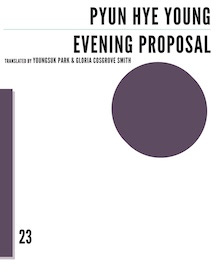



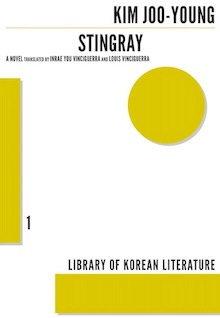
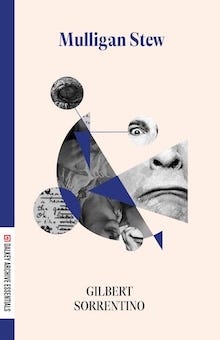
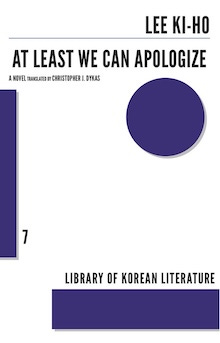
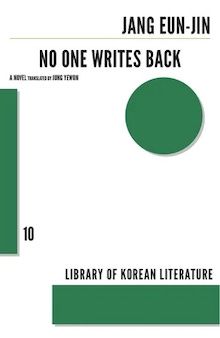
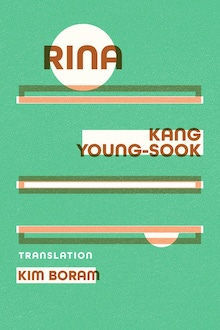
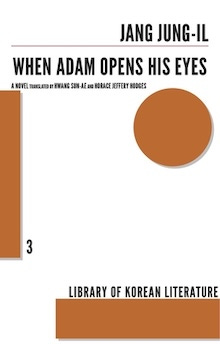
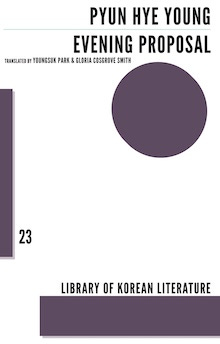
Thanks for the name-drop ;) I got into this completely randomly - an intern(?) at the Dublin Dalkey office got in touch in 2014 and offered to send me some of the books. I got fifteen before somebody found out and turned off the tap! I did read a few digitally, which I don't care for, and I borrowed a couple from my uni library (still hoping to get to the others at some point).
Other than the five you mentioned, Park Min-gyu's 'Pavane for a Dead Princess' is great fun, the most (H) Murakami of these books, and Haïlji's 'The Republic of Užupis' is a clever, Kafkaesque story. And, of course, anything by Jung Young Moon is great fun.
As for the poor translation/editing, the one I still recall with a cringe is Hyun Ki-young's 'One Spoon on This Earth'. It's an interesting book, a sort of memoir that takes in the time of the Jeju massacre (the topic of Han Kang's latest book), but it's as if the translator had a few blind spots in English (to put it charitably) and the editor was busy playing online poker or something instead of, well, you know, editing the book...
Inspired by this post, I just read and reviewed another one ;)